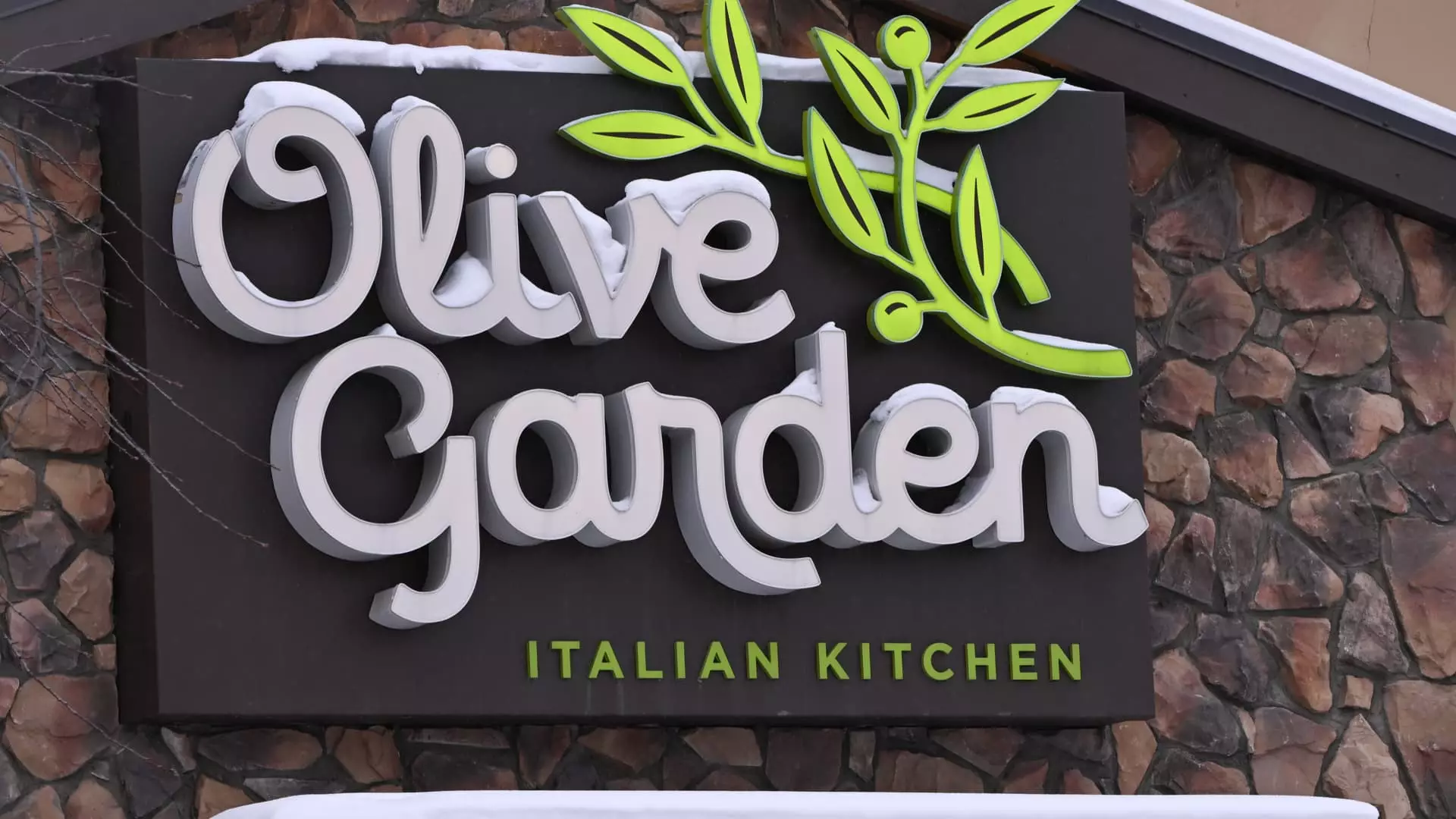Darden Restaurants, an iconic name in the dining industry, recently revealed disappointing sales figures that have rattled investors and stakeholders alike. The company, known for its popular brands like Olive Garden and LongHorn Steakhouse, fell short of Wall Street’s expectations, raising pressing questions about its future viability. With shares slipping nearly 1% in premarket trading, this development is a red flag that cannot be ignored. The slight uptick in earnings per share to $2.80, while marginally above the $2.79 expected, does little to mask the overall lackluster performance in revenue generation.
Weak Same-Store Sales: A Deeper Dive
Darden’s same-store sales growth was disheartening, clocking in at just 0.7%, significantly below the anticipated 1.7%. This metric is crucial; it indicates how established locations are faring over time, and the sluggish growth here suggests a troubling trend. Olive Garden’s sales, increasing only by 0.6%, fell well short of analysts’ forecasts. LongHorn Steakhouse, traditionally a reliable performer, also missed expectations with a mere 2.6% increase against an anticipated growth of 5%. These disappointing results from flagship brands raise eyebrows—not just about their individual performance but also about Darden’s overall brand strategy.
The Impact of Recent Acquisitions
Darden’s acquisition of Chuy’s, a Tex-Mex chain, was eagerly anticipated as a growth catalyst. While the company reported a revenue increase of 6.2% to reach $3.16 billion—thanks to the addition of Chuy’s—the reality is more nuanced. The financial gain from Chuy’s is overshadowed by the underperformers in the existing portfolio. This juxtaposition reveals an inherent vulnerability within Darden’s broader strategy; the reliance on acquisitions to bolster numbers raises concerns about organic growth in the company’s tried-and-true offerings.
Navigating the Fine-Dining Segment’s Decline
While the fast-casual market is burgeoning, Darden’s fine-dining segment—including renowned establishments like The Capital Grille and Ruth’s Chris Steak House—reported a troubling decline in same-store sales of 0.8%. This is particularly alarming given the luxurious perception of these brands. When upscale dining experiences struggle, it’s a sign that consumer spending habits might be shifting. Here, Darden faces the risk of being outpaced by nimble competitors who offer more value without sacrificing quality.
The Uncertainty Ahead: A Narrowed Forecast
For the fiscal year, Darden maintained its revenue forecast at $12.1 billion but restricted the guidance for adjusted earnings. Narrowing the outlook from a range of $9.40 to $9.60 per share to between $9.45 and $9.52 is indicative of a worrying trend. It highlights uncertainty in future performance and raises questions about how well Darden can pivot in response to ongoing market pressures. As Chuy’s won’t contribute to same-store sales metrics until fiscal 2026, stakeholders must grapple with potential losses until then.
Darden Restaurants stands at a critical juncture, with signs pointing to an urgent need for strategic reevaluation. How the company responds to these challenges could well define its path forward in an increasingly competitive dining landscape.

